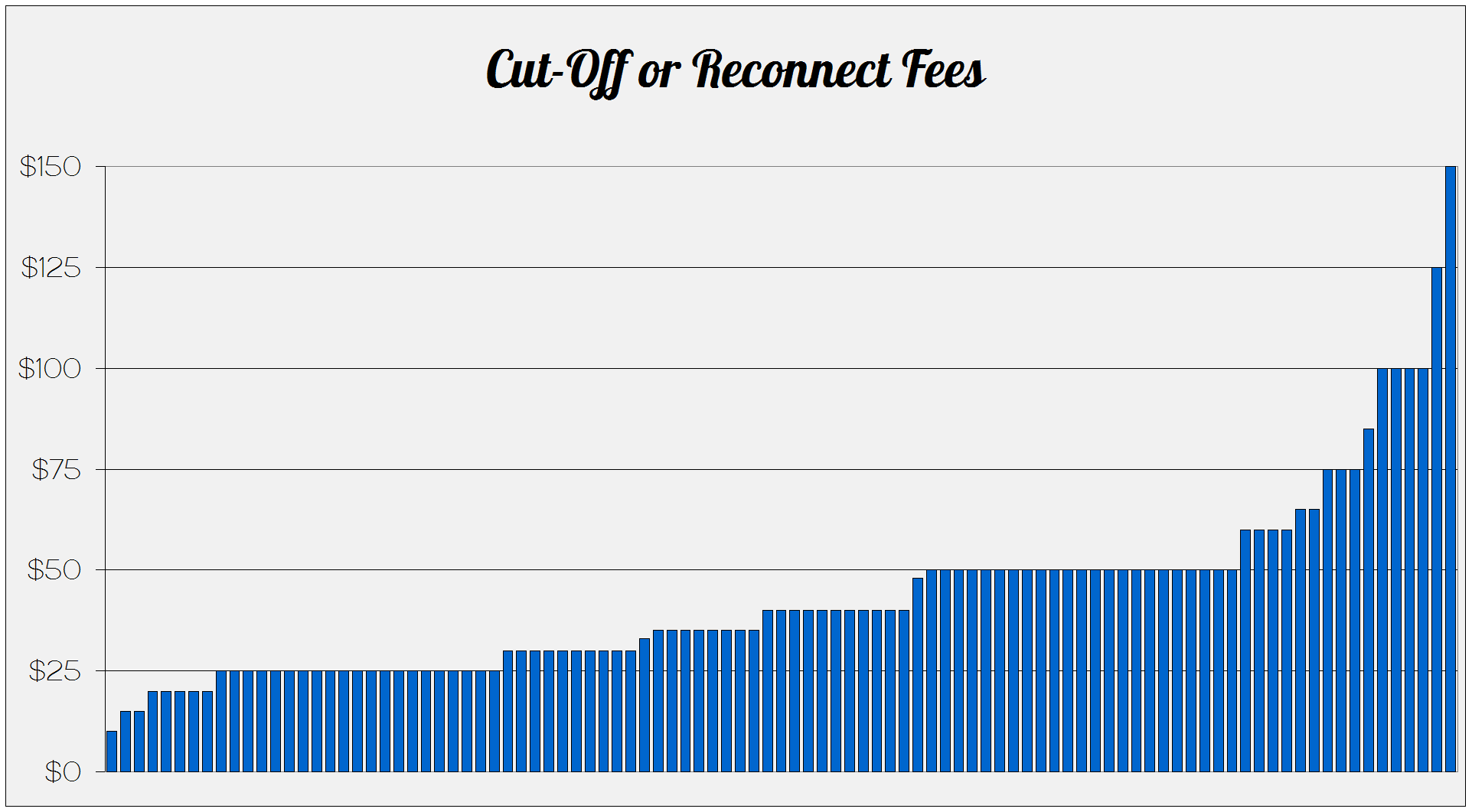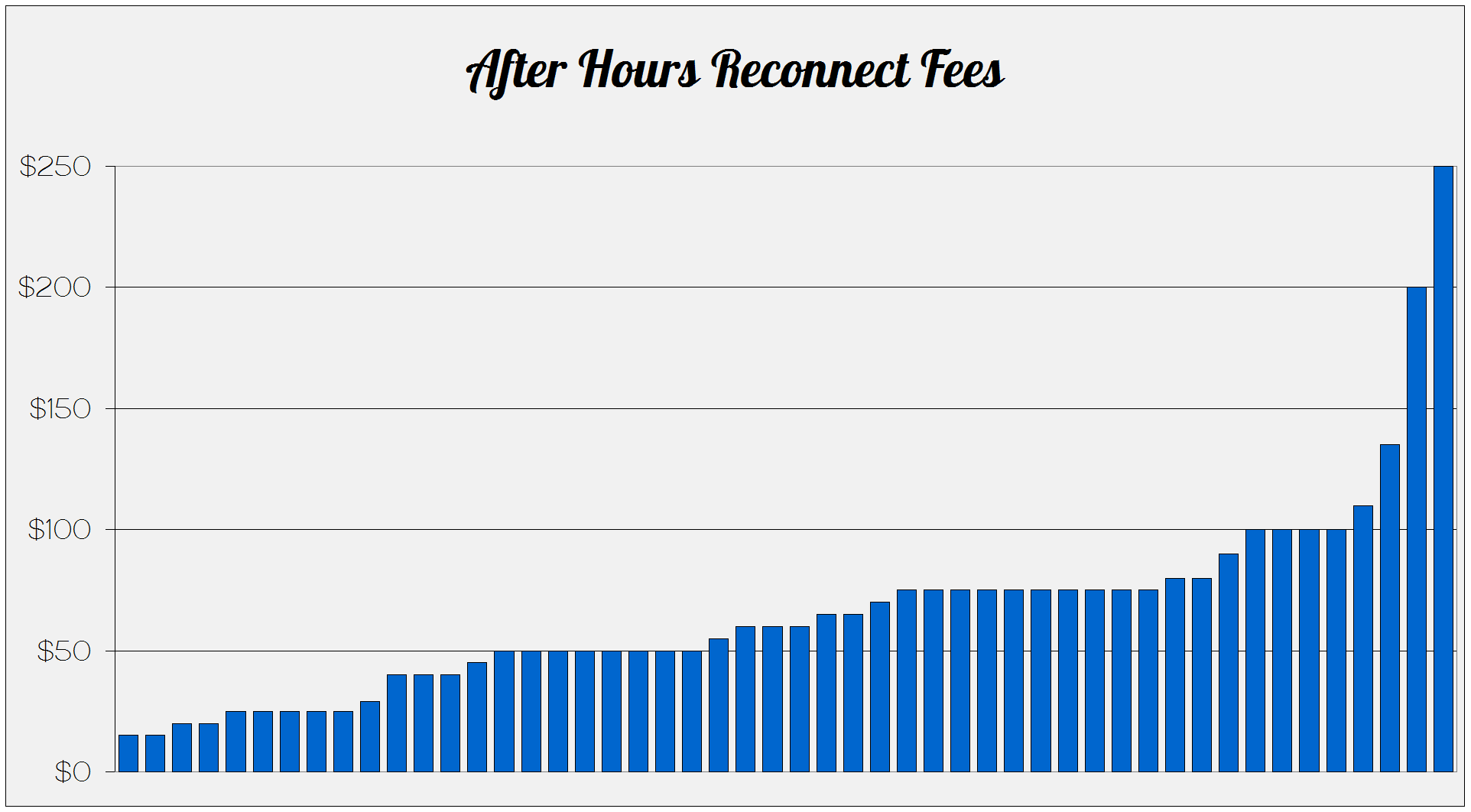This is the second of three consecutive posts reporting the results of the 2015 Utility Fee Survey. 106 utilities, representing 19 states, ranging in size from 83 to 90,000 active accounts participated in the survey.
Last week’s issue summarized the demographics of the survey respondents as well as water and sewer tap and impact fees. Today’s issue deals with delinquent fees and policies. Next week the third and final survey results issue will recap all remaining fees.
If you’re interested, here are the results from the 2012 Utility Fee Survey:
◦ 2012 Utility Fee Survey Results – Part I
◦ 2012 Utility Fee Survey Results – Part II
◦ 2012 Utility Fee Survey Results – Part III
Late fees
Of the 106 participating utilities, 104 charge a late fee. As shown by this graph, charging a late fee as a percentage of the bill is the most popular method:

Surprisingly, compared to the 2012 Utility Fee Survey, utilities charging a percentage is down just over 10% (57.7% vs. 67.8%), while those charging a flat amount is up nearly 9% (32.7% vs. 24.1%).
Utilities that assess the late fee as a percentage charge from 1% to 10%, with 10% being by far the most popular, as this graph depicts:

Late fees range from $2.00 to $45.00 for utilities that charge a flat amount. (The utility that charges $45.00 does so in lieu of charging a reconnect fee.) This graph illustrates the late fee flat amounts:

Eight of the utilities charge a hybrid late fee – a combination of a percentage with a minimum amount. Here is a graph showing what they charge:

Cut-off fees
Seven of the 106 utilities do not cut off for non-payment. All of the 99 that do cut off for non-payment charge a cut-off or reconnect fee as a flat amount, ranging from $10.00 to $150.00 as shown below:

Of the 99 utilities that cut off for non-payment, 71 of them (representing 71.9%) assess the cut-off fee as soon as the cut-off list leaves the office. I’m pleased to note that the percentage of utilities charging the cut-off fee immediately is up 10% from the 2012 Utility Fee Survey.
Cut-off fee terminology
As more utilities adopt this best practice of charging the cut-off fee as soon as the cut-off list leaves the office, many are finding that terms such as “cut-off fee”, “disconnect fee” or “reconnect fee” are becoming outdated. For that reason, the survey asked what each utility calls its cut-off fee. The results are displayed in the following chart:

For the number of responses, including the 22 terms included in the “other” category, please refer to table below:

As you can see, reconnect fee and cut-off fee are still the most popular terms, but many utilities have adopted terms that do not refer to cut-off or re-connection. Calling your cut-off fee “delinquent fee” or “non-payment fee” or any of the other terms that do not imply cut-off or re-connection helps to avoid the inevitable arguments with customers who must pay the fee but have not been cut off.
After hours reconnect fees
Of the 99 utilities that cut off for non-payment, 51 of them (representing 51.5%) will reconnect after hours and charge a fee for this service. 41 of the 51 utilities (or 82.4%) will reconnect anytime after regular office hours. The remaining 10 utilities will only reconnect during selected time periods as shown below:

After hours reconnect fee amounts range from $15.00 to $250.00 as shown by the following graph:

Next week’s issue
Part III – August 18, 2015
Next week’s final survey results deal with any remaining fees, including application, returned check, meter reread, meter tampering and convenience fees.


